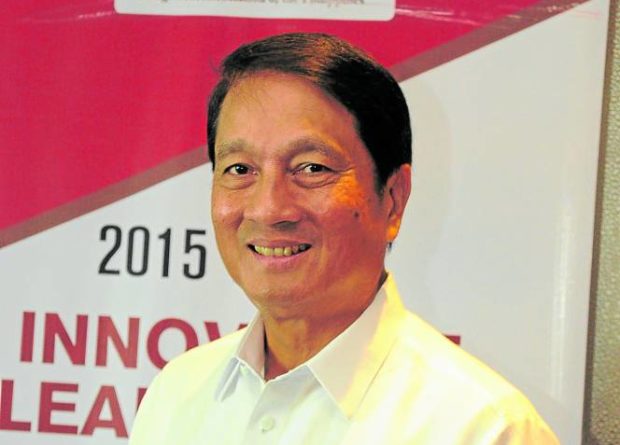I have always believed that if an idea is good, it deserves a second look. This is precisely what I am going to do with the controversial Maharlika Investment Fund (MIF).
To date, the latest proposed changes as relayed to the general public are:
1) The MIF will be led strongly by the private sector;
2) Investors will include bilateral and multilateral institutions and private investors, both local and foreign;
3) Funding from the public sector will come from earned dividends and the sale of nonearning assets and will not include the assets of Development Bank of the Philippines (DBP), Land Bank of the Philippines, Government Service Insurance System and Social Security System; and
4) The main recipient will be infrastructure and agricultural projects.
Sounds good. Maybe just to clarify where I am coming from, in 1997, this author, while functioning concurrently as chair of DBP and executive director of the Coordinating Council for the Philippine Assistance Program (CCPAP), was tasked to create the Private Sector Investment Development Fund (PSIDF) for funding major infrastructure projects. This was congruent with my position as executive director of CCPAP wherein I was in charge of raising development funding from the official development assistance sector—stakeholders include the Asian Development Bank (ADB), World Bank, International Finance Corp. (IFC), foreign embassies and other multilateral and bilateral donors —and the implementation of the Build, Operate and Transfer (BOT) program dealing with major infrastructure projects.
I worked closely with World Bank, ADB and IFC and, in the process, was able to secure an approval from these institutions to provide a grant to pay for the initial legal, financial and management studies costs for the creation of the PSIDF. It looked good and was on the way to a successful implementation. However, as fate would have it, the funding assistance was utilized instead for local government development projects, which were thereafter approved by the funders themselves. In perspective, it would have been good timing to set up the PSIDF at that time to jumpstart the funding of infrastructure projects. But there’s no use crying over spilled milk. What’s done is done.
More palatable
This brings us back to the MIF, which has now become acceptable and doable based on the latest changes made. Some recommended major items for reconsideration before it is implemented, though, are listed here.
Change of name
Since this is going to be done globally, the word Maharlika might sound unfamiliar to foreign investors. Perhaps, we can change the name to Philippine Development Investment Fund or some other name that is understood globally.
Fund management
A professional fund manager (corporate or individual) should be chosen through a rigid selection process with terms of reference for bidding that are well-defined and crafted. The fund manager will take care of managing the fund, i.e., investing wisely, fund raising, performance reporting and expanding the projects available for investment, among other functions.
It is important to increase the possible projects in the pipeline for investment and to review and analyze these well. A carefully selected board and investment committee should be formed for proper governance and strategic oversight. Investment criteria and objectives should be set. The performance of the fund manager should be evaluated annually and replaced if performance is below par based on agreed parameters. A listing of areas preferred for investments should also be decided at the outset.
Risk mitigation
A decision will have to be made if investments in new or greenfield projects should be made. For the initial construction stage of the project, this can be funded by local banks through bridge financing with takeout by the MIF. A conversion from debt to equity can then be made. In this manner, the initial construction phase is over and the project will then be in an operating stage when the MIF invests. Risks, therefore, are minimized.
Amount of investment
Decisions will have to be made on amounts of investments for projects and whether minority or majority positions should be taken. Also, if a majority equity stake is made, what positions, i.e., CEO or chief financial officer of a project, should be taken for better control.
Investment tenure
Investment holding period should be determined based on yield considerations and growth prospects of the industry.
Fund income
The unutilized fund balance can be invested in fixed income instruments and selected index stocks and earnings can be utilized to fund the working capital requirements of the fund. Earnings from dividends and divestments can contribute to the growth of the fund.
In an increasingly competitive world, good ideas will always give an edge—an idea that opens new frontiers, new entries of foreign and local direct investments or an insight that makes sense to minimize a nation’s problems.
The MIF, with its recent changes, is one such idea that has become interesting and definitely deserves a second look by all of us. INQ
This article reflects the personal opinion
of the author and not the official stand of the Management Association of the Philippines or MAP. The author is former president of MAP. He is chair of Institute of Solidarity in Asia or ISA. He was former chair, president and CEO of DBP, and former independent director of Metrobank.
Feedback at map@map.org.ph and delrosariofjr@yahoo.com.
Read Next
Subscribe to INQUIRER PLUS to get access to The Philippine Daily Inquirer & other 70+ titles, share up to 5 gadgets, listen to the news, download as early as 4am & share articles on social media. Call 896 6000.
For all the latest Business News Click Here
For the latest news and updates, follow us on Google News.

